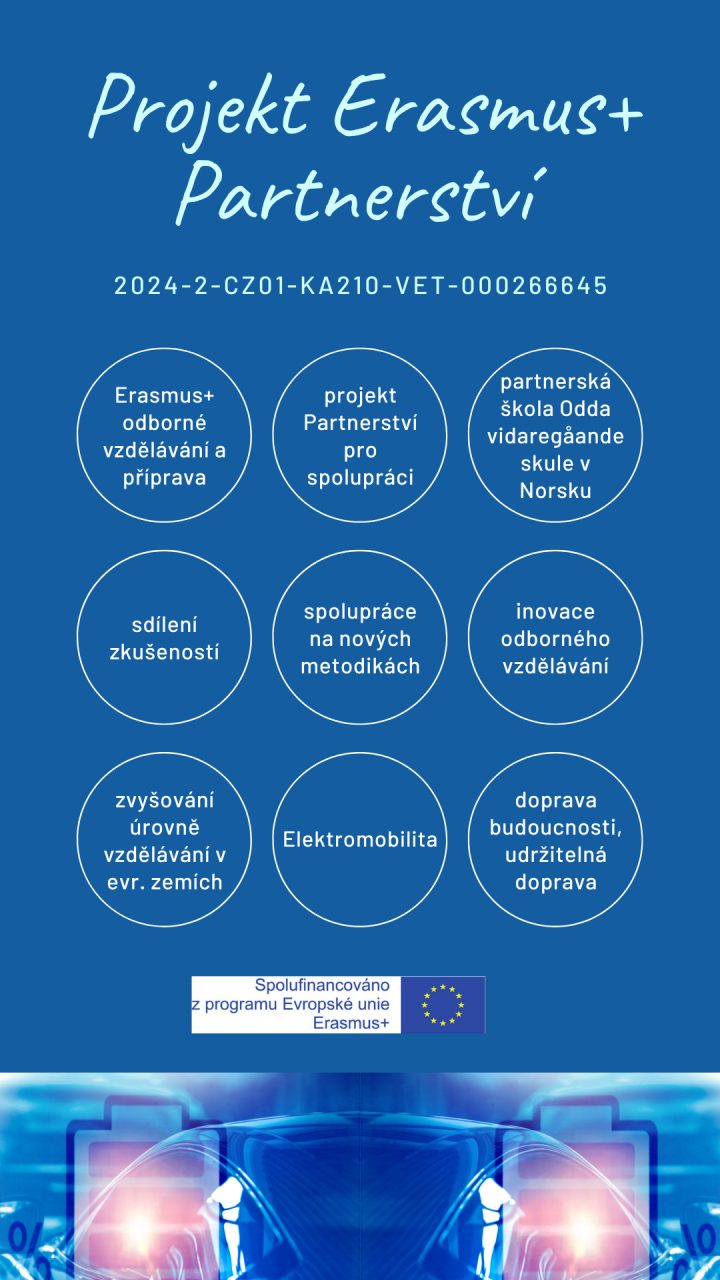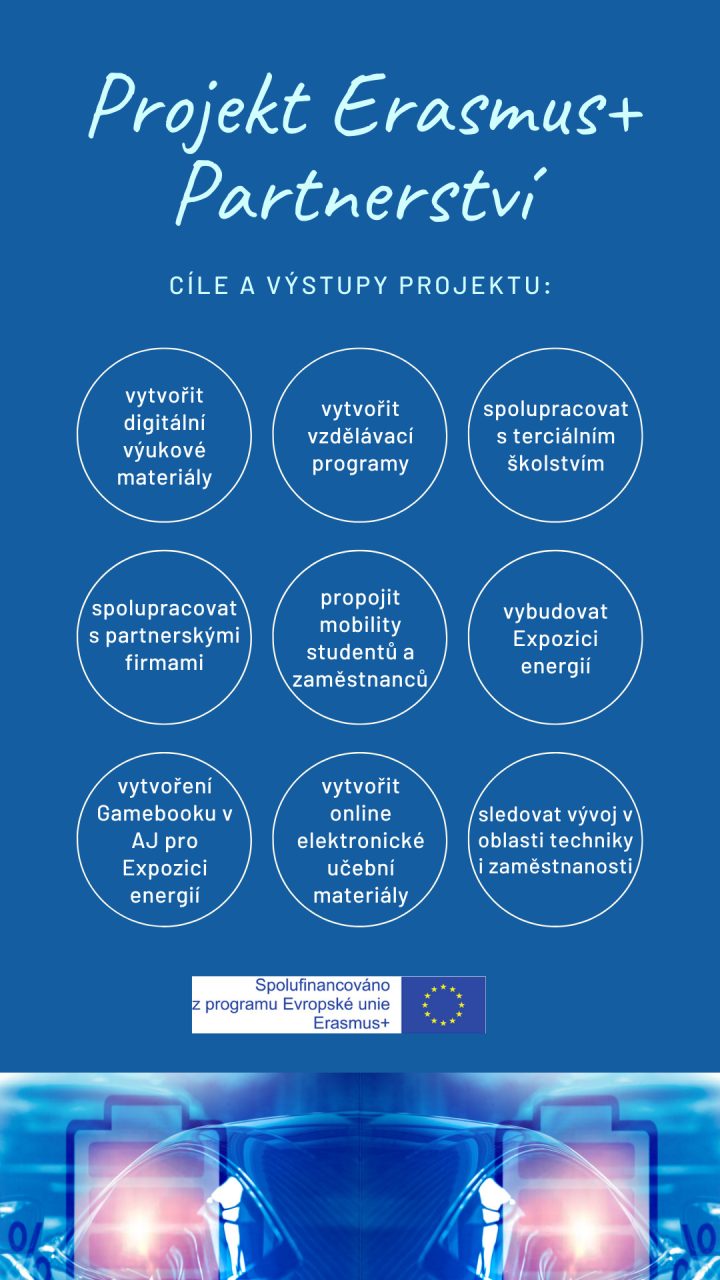Objectives of the project
The aim of this initiative is to build a network of vocational schools and partner companies that will work together to develop education in the field of electromobility and sustainable transport.
The sub-objectives of the project focus on the extension and innovation of existing teaching methods, projects and study materials for 1st and 2nd year students, which were developed in the framework of previous cooperation with the Latvian partner. Together with the Norwegian school, new study materials for higher grades, including electronic textbooks and an interactive gamebook focused on electromobility. This innovative approach will contribute to the modernisation of vocational training and enable students to understand sustainable transport issues more effectively.
The project also focuses on verification of the effectiveness of project-based learning in the field of Electromobility through cooperation with partner companies and universities. An important part of this will be building of the Energy Expositionwhich will provide an interactive learning space not only for students, but also for primary school pupils and the general public. Another important step is creation of a new eTwinning project, website modernization and organization international competitions and educational initiatives for students from participating countries. An integral part of the project is also integrating electromobility into the school curriculum and support for legislative changes to enable its effective implementation in education systems.
Benefit of the project
The project brings a number of significant benefits that ensure its long-term impact and effectiveness. Regular meetings of participants and use of social media will enable effective communication between partners and strengthen cooperation between the institutions involved after the end of the project. An important component is also promoting inclusion in educationwhich focuses on equal opportunities for all pupils, including girls in technical fields, students from socially disadvantaged groups and inclusion of refugees and migrants into the education system.
The emphasis is on sustainability of the projectso that its outputs are usable after its formal end. Thanks to the established contacts and effective cooperation, the partnership with the Norwegian school will continue, which will allow further development of educational methods, exchange of experiences and sharing of best practices in the field of electromobility and technical education.
Target groups of the project
The main target group of the project is mainly pupils of partner schoolswho will have access to the new electronic teaching materials, a gamebook on electromobility and the Energy Exposition. However, other technical schools in both countries will also benefit from the project's outputs. The project also involves teachers and school staffwho will participate in its implementation or take over the experience gained. An important group is also school representatives in the working teamswho provide project management, legislative support and communication with industry partners and universities. In addition, the energy exposition will appeal to primary school pupils and the general public, for example during open days or school events.
Working groups
The project is divided into several working groups (WP). WP1 includes school leaders and project coordinators who organise, publicise and work with employers. WP2 will focus on teachers of vocational subjects who will compare education systems and innovate teaching materials. WP3 connects apprenticeship teachers and student teams with real school projects and creates practical models for the Energy Exposition. WP4 brings together AJ and IT teachers who are involved in translating materials into English, creating a gamebook, an e-twinning project and an online learning platform. The whole project thus brings a comprehensive innovation in e-mobility education with an international dimension.
We are looking forward to this project, which will bring us modern teaching, new opportunities for students and strong partnerships!
(editors)


